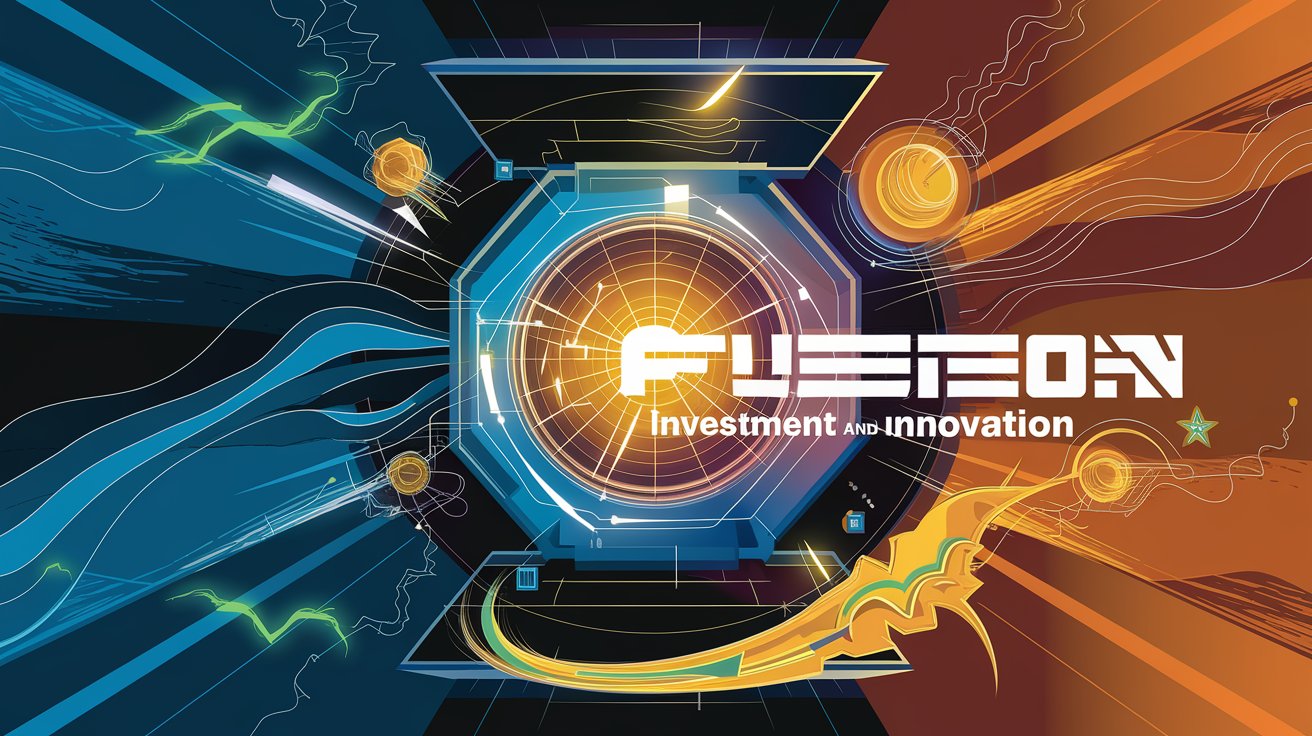Nuclear fusion has long been heralded as the “holy grail” of clean energy. If successfully commercialized, fusion energy could offer virtually unlimited power with minimal environmental impact, eliminating the reliance on fossil fuels and dramatically reducing global carbon emissions. Unlike nuclear fission, which powers current nuclear reactors and comes with risks like radioactive waste, fusion uses light atomic nuclei, like hydrogen, to release energy—just as the sun does—without creating long-lasting radioactive by-products.
For decades, fusion energy was largely confined to research labs, but recent technological advances and breakthroughs in plasma physics have sparked new hope in the feasibility of fusion. This momentum has led to a surge in private investment, with several startups entering the space, each raising hundreds of millions of dollars. These startups are aiming to achieve what has eluded scientists for years: a stable, commercially viable fusion reaction. This blog takes a detailed look at fusion startups that have raised over $100 million in funding, exploring their unique approaches, technological innovations, and potential for success.
The Rise of Fusion Startups
The private sector has seen a renewed interest in fusion energy, driven by advances in computational power, better materials, and a greater sense of urgency to transition to cleaner energy sources. Governments and large research institutions like ITER (International Thermonuclear Experimental Reactor) are still key players, but startups are now taking the lead, fueled by venture capital (VC) and large institutional investments.
In the past decade, fusion startups have attracted billions in funding, reflecting both technological optimism and the global push for carbon-neutral energy solutions. Several of these companies have raised over $100 million, positioning them at the forefront of the fusion energy race.
Commonwealth Fusion Systems
One of the most prominent players in the fusion startup ecosystem is Commonwealth Fusion Systems (CFS). Spun out of the Massachusetts Institute of Technology (MIT), CFS aims to commercialize fusion power using a compact, high-field approach to magnetic confinement fusion. Its design, known as SPARC, relies on high-temperature superconductors (HTS) to build smaller and more powerful magnets, which help confine the plasma necessary for fusion reactions.
CFS has raised significant funding from a variety of sources, including venture capital firms, private equity, and government-backed initiatives. The company has attracted investments from large energy firms like Equinor and Eni, showcasing the energy sector’s interest in fusion technology. One of CFS’s key differentiators is its use of HTS magnets, which enable more efficient magnetic confinement, reducing the size of the reactor and potentially speeding up the path to commercial fusion energy.
The startup is currently building its prototype reactor and aims to demonstrate net energy gain—where the reactor produces more energy than it consumes—within the next decade. If successful, this could represent a major breakthrough in the commercialization of fusion energy.
TAE Technologies
TAE Technologies, based in California, is another major player in the fusion energy race, with a focus on creating a cleaner, more efficient fusion process. TAE’s approach is unique in that it combines field-reversed configuration (FRC) plasma physics with advanced particle beams. The company’s approach to fusion focuses on using hydrogen-boron fuel, which, unlike deuterium-tritium (the most common fusion fuel mix), does not produce harmful neutrons. This could potentially make the fusion process cleaner and less reliant on costly radiation shielding.
TAE Technologies has raised substantial investment from high-profile backers, including Google, Venrock, and Wellcome Trust, reflecting the increasing confidence in its novel approach to fusion. The company’s use of machine learning, in collaboration with Google, has accelerated its research, allowing it to test fusion configurations more efficiently and accurately.
While TAE Technologies has yet to achieve net energy production, its long-term goal of producing electricity from fusion using clean fuels like hydrogen-boron positions it as a leader in the sustainable fusion space. The startup is currently building its next-generation fusion reactor, named Copernicus, which it hopes will pave the way for commercial fusion power in the coming years.
Helion Energy
Helion Energy, based in Washington state, is pursuing an approach to fusion that stands out from its competitors. Rather than relying on magnetic confinement, Helion uses pulsed magnetic compression to achieve fusion, with an emphasis on generating electricity directly from the fusion reaction itself, rather than through conventional steam turbines.
Helion’s fusion technology revolves around combining deuterium and helium-3 as fuel, which generates significantly less radioactive waste than traditional fusion fuels. The company’s goal is to build a fusion reactor that can fit inside a shipping container and produce electricity at a competitive cost, ideally less than $1 per watt.
Helion has attracted major funding from private investors and the U.S. Department of Energy (DOE). The company made headlines when it demonstrated its sixth prototype, which successfully sustained plasma fusion for record durations. Helion aims to have its first commercial fusion power plant operational within the next decade.
General Fusion
General Fusion, headquartered in Canada, is another fusion startup with big ambitions. The company is focused on magnetized target fusion (MTF), which combines the principles of magnetic confinement and inertial confinement fusion. General Fusion’s approach involves injecting plasma into a sphere filled with liquid metal, where pistons compress the plasma to achieve the conditions necessary for fusion.
General Fusion has secured investment from a range of notable backers, including Jeff Bezos, Temasek, and the Canadian government. The company’s unique MTF approach holds promise for creating a scalable fusion power plant that can be built more cost-effectively than conventional designs.
The company recently announced plans to build a demonstration plant in the UK, which will serve as a proof-of-concept for its fusion technology. If successful, General Fusion’s approach could offer a path to commercial fusion power that is both practical and economically viable.
First Light Fusion
First Light Fusion, based in the UK, is taking a different approach to fusion by focusing on inertial confinement using projectile-based fusion. The company’s technology involves firing projectiles at high velocities to compress fusion fuel and create the necessary conditions for fusion. This method, known as projectile fusion, could potentially offer a lower-cost alternative to more complex fusion systems.
First Light Fusion has raised substantial funding from investors and government grants, and it is currently working on scaling up its technology for commercial use. The company’s approach has generated interest due to its simplicity and potential cost savings, as it avoids some of the challenges associated with magnetic confinement systems.
First Light is developing a prototype that it hopes will demonstrate the feasibility of its technology, with the goal of scaling up to commercial power production in the coming decades.
Zap Energy
Zap Energy is another U.S.-based fusion startup that has garnered significant attention and investment. Zap Energy focuses on using a technique called sheared flow stabilized Z-pinch to create a stable plasma for fusion. This method involves using electric currents to compress plasma, which generates the conditions needed for fusion without the need for large magnetic confinement systems.
Zap Energy’s approach has attracted investors who see potential in its low-cost, scalable fusion model. The company is working to prove that its technology can achieve net energy production, and its success could offer a faster and more economical path to commercial fusion energy.
Conclusion: The Path Forward for Fusion Startups
Fusion energy represents the next frontier in clean energy technology, offering the potential for limitless, carbon-free power. While the science behind fusion is complex and achieving net energy gain remains a formidable challenge, the progress made by these startups is promising. With over $100 million in investment, these companies are leading the charge toward making fusion energy a reality.
As these startups continue to develop their technologies and scale their operations, the next decade could see significant breakthroughs that bring fusion energy closer to commercialization. The involvement of private investors, government support, and collaborations with research institutions is accelerating innovation in this field. While there is still much work to be done, the future of fusion energy looks bright, and the race to achieve the world’s first commercial fusion power plant is heating up.
As we look ahead, fusion energy has the potential to revolutionize how we power the world, offering a clean, sustainable solution to the global energy crisis. The startups leading this charge are at the forefront of a new era in energy innovation, and their success could mark a turning point in the transition to a carbon-neutral future.





